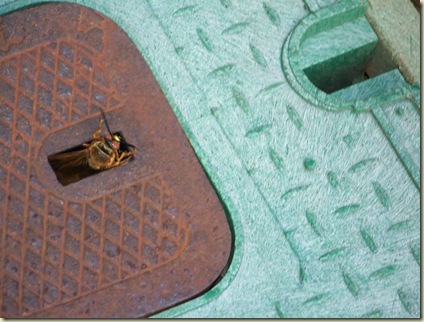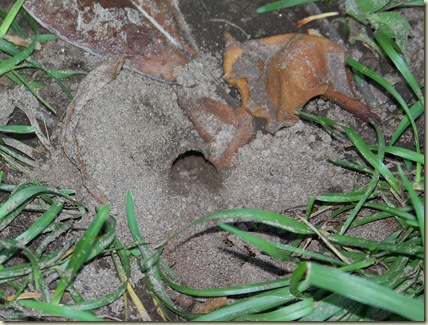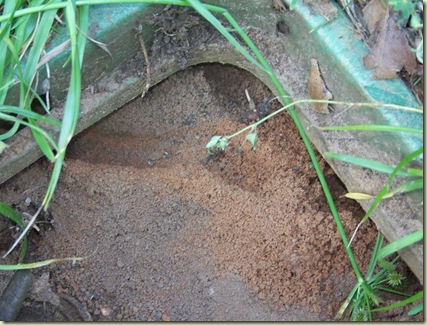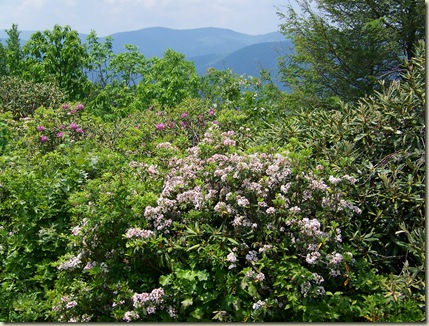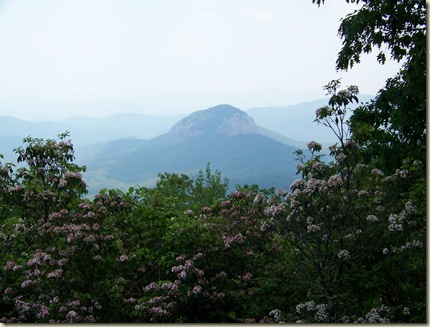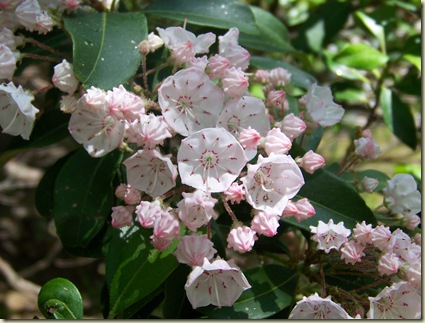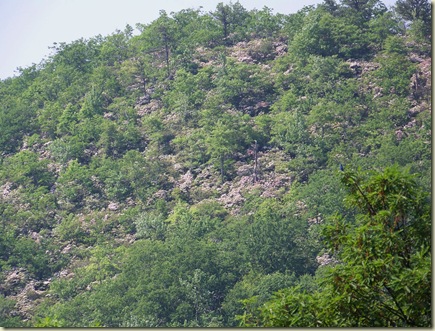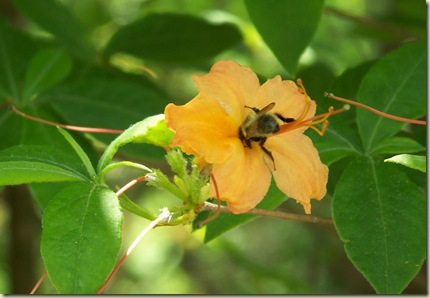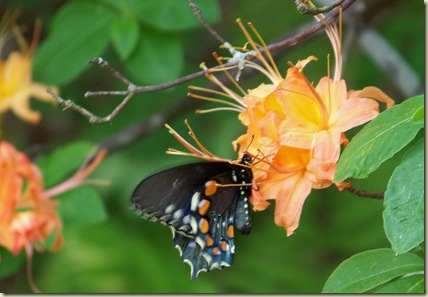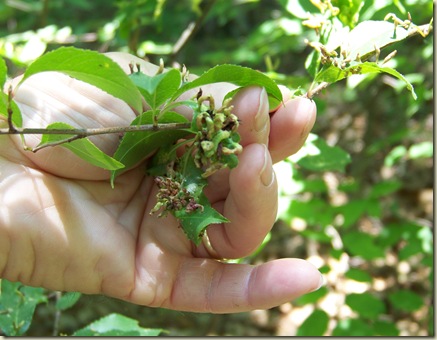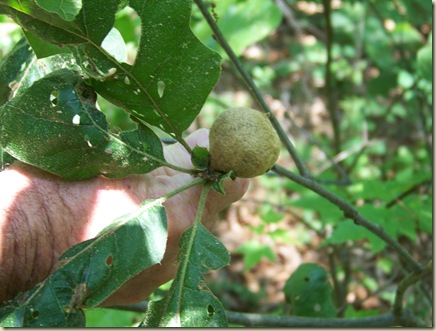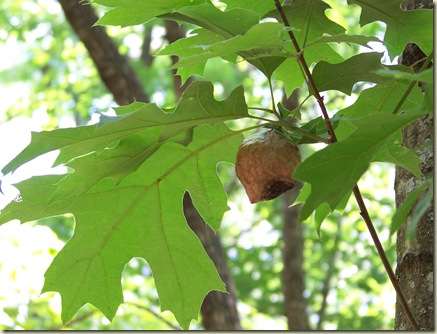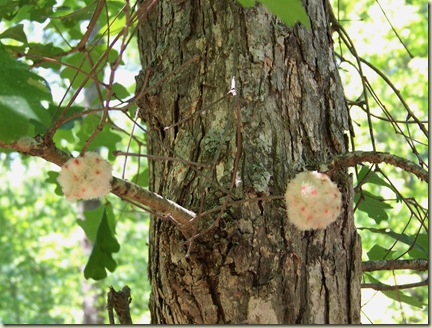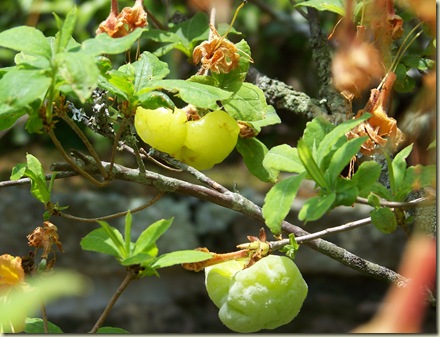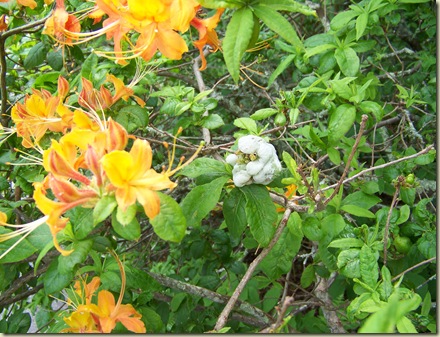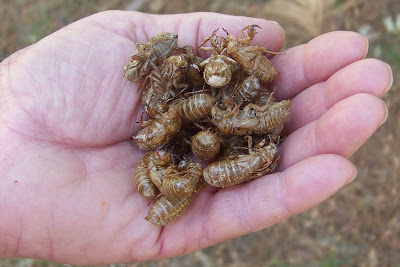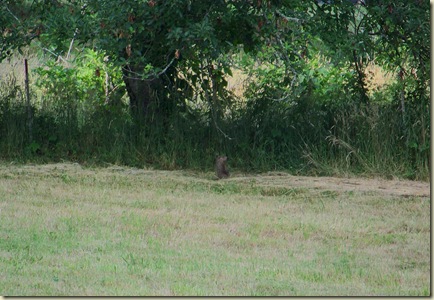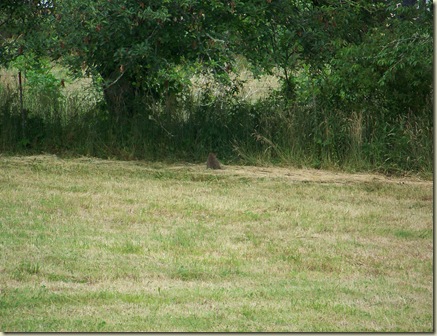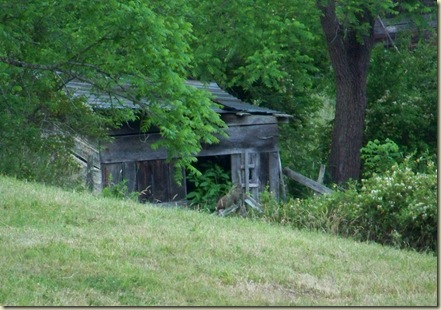I (S) have just returned from taking my mother to her school reunion in eastern Kentucky. She was one of three members of the class of "37 who were present. Over five hundred attended the event. We had a great week visiting with relatives and celebrating her 91st birthday.

A highlight of the trip for me was going to Natural Bridge State Resort Park, near Slade, Kentucky. http://parks.ky.gov/findparks/resortparks/nb/
My parents and brother have been there many, many times, but I could not remember having been. I now understand its appeal and look forward to visiting again.
My mother told me that when her sister was 80 she made the climb up to the top of Natural Bridge. It is a rather steep walk up about 300 feet, I think I was told. I told her if I could not do this at my present age, I would surely be shamed! I walked it alone before Mom got up for the day. Well I say "alone", but here is one of my fellow hikers, a Daddy Long Legs. My own father is 6'5" and has long legs so I have always liked the name of these critters.
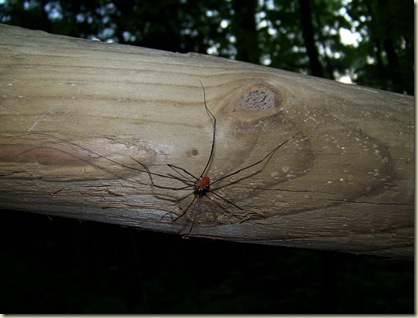
Here is another companion, a chipmunk. There were several of these guys around.
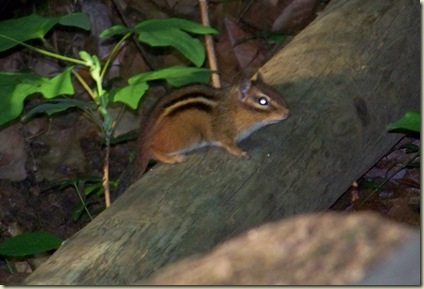
I found this sign amusing because below the heading it tells about why you will probably not see much wildlife here. It is fuzzy because I was focusing on the large deer in the background. It was early and shady and so the light did not show him in the picture, save one bright, glowing eye.

When I returned there was a chipmunk running around the sign. It was as though the animals wanted to make a mockery of it.
Near the top of the sandstone arch, a pair of pileated woodpeckers were making their usual racket. This one I think is the female.
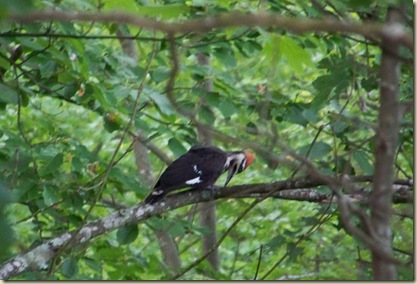
This lovely luna moth was on the paved walk.
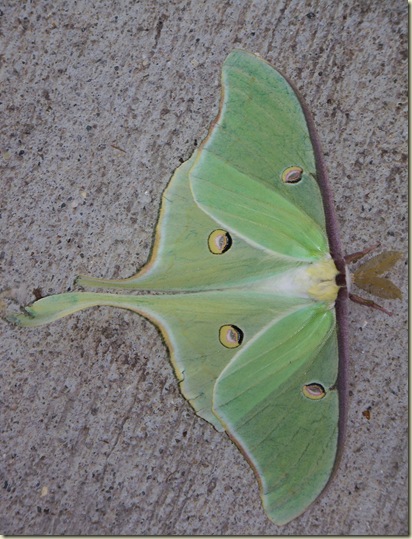
There are several trails that lead to the arch, but I took the original one that was supposed to be the easiest.
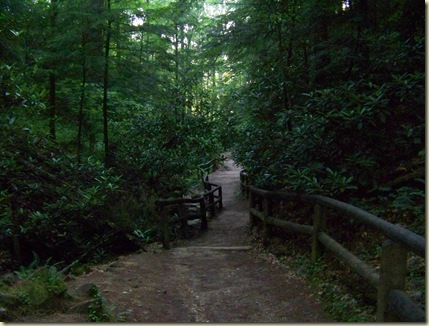
Here is part of the arch.
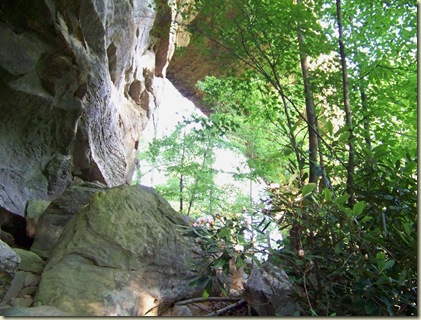
At the base of the arch, is a long walk--I counted 54 paces---through what is called Fat Man's Misery. My dad said it is a natural split in the rock.
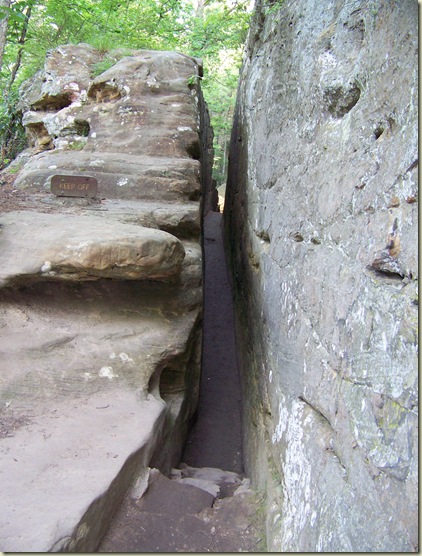
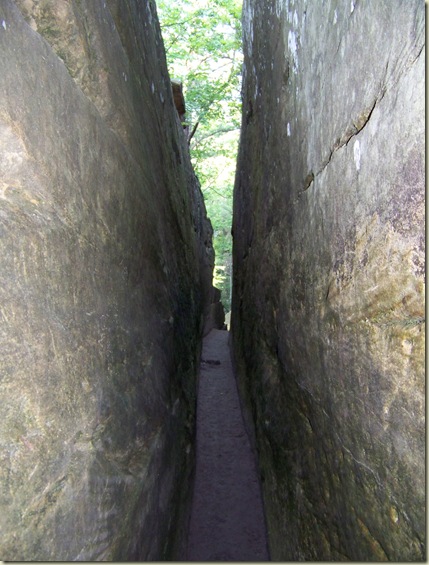
This picture below shows how wide it is: about 3 sneakers wide.
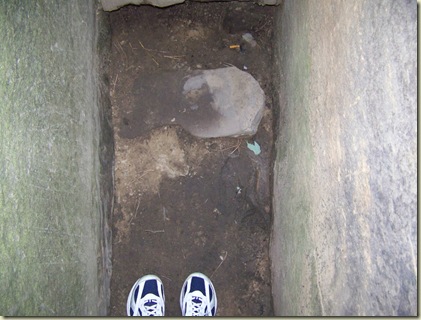
This view is looking up from inside the space.
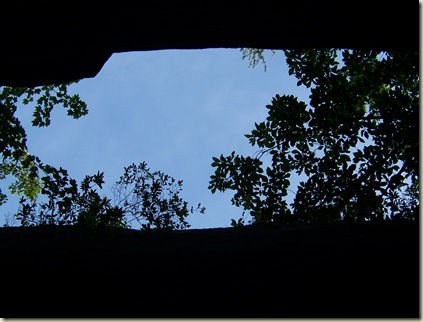
This is on top of the arch.
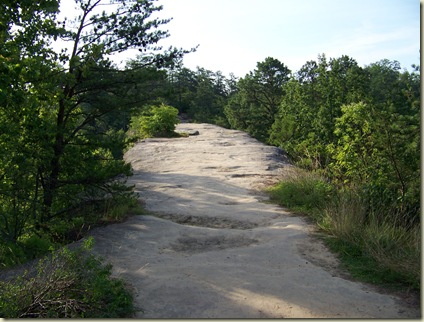
Here are some views from on top.
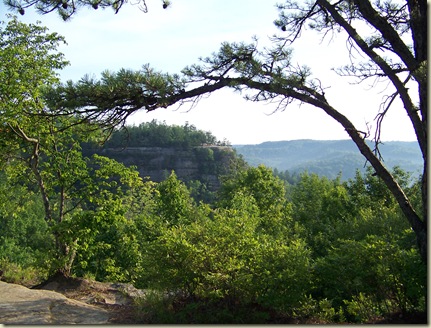

There were other interesting things along the trail, including a charming shelter made by the CCC in the 1930's.
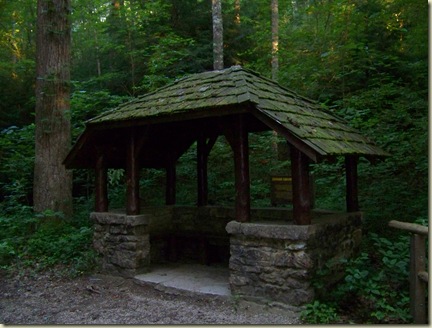
And serious poison ivy! No need to remind folks to stay on the trail!
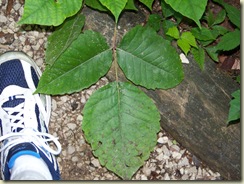
I met one family when I was going up and one pair of hikers when I was going back down. Otherwise, I had the place to myself.
It was a wonderful way to begin a day. Continuing with a large breakfast in the lodge dining room was just icing!
My roots are in Kentucky and I can see why my family continues to return, time after time.
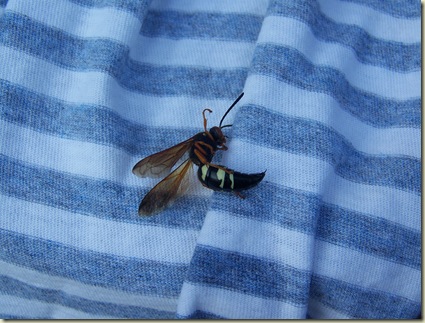 We continued to notice them for about two weeks, but have not seen one since. According to our research, the egg laid on the cicada will go through its metamorphosis, feeding on the cicada, and emerge next spring as an adult.
We continued to notice them for about two weeks, but have not seen one since. According to our research, the egg laid on the cicada will go through its metamorphosis, feeding on the cicada, and emerge next spring as an adult.
